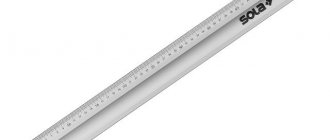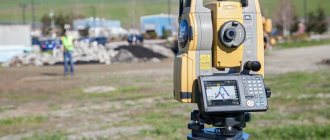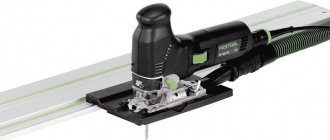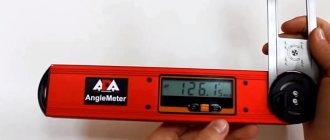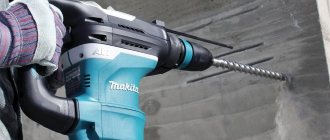History of creation
The ruler was used even in the ancient world.
During excavations at the ruins of Pompeii, geologists found wooden planks that looked very similar to an ordinary ruler. In 1793, the French Academy took the forty-millionth part of the meridian passing through Paris as 1 centimeter, and the centimeter was divided into 10 parts, calling each part a millimeter. Academicians created a standard meter made of platinum. The standard meter is a ruler 25 millimeters wide, 1 meter long, which is the most accurate ruler and is used to make other metric rulers. The reference meter is kept by the International Bureau of Weights and Measures in France.
Rulers came to Russia from France after the Patriotic War of 1812. And only in 1899, on the initiative of the Russian scientist Dmitry Ivanovich Mendeleev, they began to use the metric system of measures, after which the production of rulers was launched.
History of the slide rule
Most people have only seen a slide rule (or a tally rule) in pictures or movies, such as Titanic (1997), This Island Earth (1955) and Apollo 13 (1995). If you're a Star Trek fan, you'll know that Mister Spock uses Jeppesen CSG-1 and B-1 slide rules in several episodes.
However, there was a time when engineers did not carry calculators or mobile phones, but slide rules on their belts. The Pickett slide rule flew to the moon with the astronauts, and the K&E slide rule made the creation of the atomic bomb possible.
Slide rules are part of mathematics and history. They are not subject to the influence of electromagnetic pulses, and, therefore, are able to survive the Apocalypse that everyone is prophesying for us. In the case of slide rules, as with many other things in this life, the rule applies: the more, the better.
The slide rule was developed by the English mathematician William Oughtred in the 17th century. It remained popular among people who took mathematics seriously until the early 1970s. In fact, the idea of performing various calculations using a ruler was not new at that time.
Edmund Gunther had previously developed a sector with the same division as a slide rule, but to solve any problem with it, you needed a separate set of dividing compasses. Oughtred's device was a circular slide rule. One of his students, Richard Delamaine, claimed to have also invented the slide rule. Both men accused each other of stealing ideas.
Modern scientists believe that they simultaneously created the circular slide rule. Delamaine was the first to publicly announce his invention, but Oughtred apparently completed the development of the slide rule before his student. The conventional slide rule was created by Oughtred around 1650.
Compasses
When performing graphic work, rulers are used to draw straight lines. A compass is used for drawing circles. There are several varieties of such tools:
Measuring compasses. Both legs of such instruments end in needles. Compasses of this type are used mainly for measuring segments.
Goat leg compasses. This instrument has only one leg with a needle. The second part has a special wide ring for a pencil.
Graphic ordinary compasses. There is a needle on one leg of such instruments, and a graphite rod is inserted at the end of the other.
There are also special types of compasses. For example, a dot is a small button and can be used to draw concentric circles. Sometimes engineers and technologists also use calipers. This tool is very convenient for drawing circles of small diameter (0.5-8 mm).
Slide rule theory
Slide rules are associated with Napier's discovery of logarithms. Logarithms played an important role in the world of pre-computer mathematics. Let's look at the decimal logarithm as an example. If you square 10, you get 100. Therefore, the logarithm of 100 is 2. If you raise 10 to the fifth power, you get 100,000. Hence, the logarithm of 100,000 is 5. The resulting numbers do not have to be integers. So, for example, the logarithm of 200 is 2.3.
Logarithm table
If you spent a lot of time on calculations, you would certainly create a table of numbers and their logarithms. Question: why? The answer is simple. Suppose you wanted to multiply two numbers - 200 and 100. This is quite easy to do without resorting to any tricks. You write down “200x100” on a piece of paper and multiply each number. This is much easier to do using logarithms.
The logarithm of 200 is 2.301, and the logarithm of 100 is 2. The sum of the logarithms of 200 and 100 is 4.301 (2.301+2). If you raise 10 to the power of 4.3, you will get a not entirely accurate answer (19998.6), since we rounded the logarithm to 200. Obviously, the more numbers in your table, the better.
This is not a very good example. But if you need to multiply 7329 by 8115, then knowing the logarithms of these numbers (3.8650 and 3.9093, respectively), it will be very easy for you to perform this calculation. Raise 10 to the power of 7.7743 and you get the correct answer - 59470282 (actually 59474835, but again, very close).
Movable tables
How does this relate to the slide rule? A slide rule is an efficient table of slide rules made of wood, plastic or metal. Marks are applied to the surface based on the logarithm of a number, but are indicated by real numbers, that is, the distance between 0 and 1, for example, is much greater than the distance between 8 and 9.
Let's look at the principle of using a slide rule using a simple example: 2x3. Move scale C so that the 1 is above the 2 on the fixed scale D.
Then set the slider to 3 on the C scale. Now you just need to look at the number on the fixed D scale to get the answer (6). The principle of using a slide rule is very easy to understand if you hold it in your hands. You can also use the web simulator, available at the link. You can see a screenshot of the calculation below.
If you are dealing with large numbers, first reduce them by the nth number of tens of times, and then mentally increase the result by the same amount. For example, to calculate the product of the numbers 20 and 30, you first need to reduce them by 10 times, and then increase the result by 100 times.
Division and other operations
Division works much the same way, but is based on subtraction. If you move scale C so that the number 3 is above 6 on the fixed scale D, you will be able to see the answer 2 under 1 on scale C (scale D). A transparent plastic slider with a thin line in the middle will help you not to get confused in the numbers. Some rulers even have a small magnifying glass that allows you to better see the markings on the scale.
Getting the right answer
Unlike a calculator, a slide rule typically requires you to have some idea of the answer in order to interpret the results. Also you should be able to see the difference between, say, 7.3, 7.35 and 7.351. That's why the more the merrier.
An ordinary slide rule is about 25 centimeters long. Pocket rulers were short but impractical. There were also huge slide rules designed for classroom use (some of them were up to 2 meters 15 centimeters long). For more accurate calculations, engineers used rulers shaped like a cylinder. They were the equivalent of slide rules up to 10 meters long.
Pictured above is Otis King's slide rule, which was the size of a 170cm long ruler but fit easily into a pocket. In appearance it is very similar to a telescope. In fact, it is a slide rule with a scale marked in a spiral around the instrument. Otis King's ruler had more numbers than a regular slide rule, but the calculations made with its help were often not entirely accurate.
Patterns
Sometimes it is impossible to make curved lines in drawings using only a compass. In this case, they are drawn point by point by hand. To trace the resulting curved lines, special tools are used - patterns. They can have different shapes. Drawing accessories of this type should be selected in such a way that their edge best matches the shape of the lines that need to be drawn.
How to start collecting slide rules and where to get them?
Many people think that slide rules are difficult to collect, but they are actually quite easy and inexpensive. At one time they were widespread, but after the invention of the calculator and computer they instantly became unnecessary. If you try, you can find people who still have used or completely new slide rules.
The eBay site is where you can find over 3,000 slide rules, as your search results show. They can also be purchased cheaply at local stores. Often people don't understand what slide rules are for, so they're happy to get rid of them. In addition, if people find out that you are a collector, they may just give you slide rules that once belonged to their distant relatives. They will be pleased to know that you will keep them.
If you decide to buy a slide rule, make sure that the C scale works and the transparent slider does not fog up. Repairing or replacing them is very painstaking work. Also avoid rulers with signs of corrosion or faded markings. They can be restored, but this requires a lot of effort and time. You can find tips on the Internet on how to properly clean various rulers.
If you purchased a slide rule, you must remember that it, like any other thing, requires special care. To ensure that its moving parts work well, wipe them with furniture polish (if the ruler is wooden). People used to lubricate iron slide rules with Vaseline. It is also important to keep the slide rule clean at all times and ensure that dirt does not get under the slide.
Also, do not leave the ruler in direct sunlight. Also, try to avoid using soap, water and other substances that may damage your ruler. Slide rules were once a kind of computer and will probably replace our modern PCs when the Apocalypse comes.
Protractor
There are types of drawing rulers that are most often used by schoolchildren. This includes the protractor. It plays an important role in constructing and measuring angles in degrees. The product can be either round or semicircular, or triangular. The protractor is used not only by students of secondary schools, but also by architects, builders, and engineers.
Device
The slide rule (standard) was made of dense wood that was resistant to abrasion. For this, pear wood was used on an industrial scale. The body and engine were made from it - a smaller strip mounted in an internal groove. It can be moved parallel to the base.
The runner was made of aluminum or steel with a viewing window made of glass or plastic. A thin vertical line (visor) is applied to it. The slider moves along side guides and is spring-loaded by a steel plate. The body and engine are lined with light celluloid, on which scales are embossed. Their divisions are filled with printing ink.
There are seven scales on the front side of the ruler: four on the body and three on the engine. On the side edges there are simple measuring markings (25 cm) with 1 mm divisions. The © scales on the slider below and (D) on the body immediately below are considered the main ones. On the base there is a cubic marking (K) on top, and a quadratic marking (A) below it. Below (on top of the engine) there is exactly the same symmetrical auxiliary scale (B). At the bottom of the case there are still markings for logarithm values (L). In the very center of the front part of the ruler, between the markings (B) and ©, there is a reverse number scale ®. On the other side of the slider (the bar can be removed from the grooves and turned over) there are three more scales for calculating trigonometric functions. The upper one (Sin) is for sines, the lower one (Tg) is for tangents, the middle one (Sin and Tg) is general.
Varieties
A standard slide ruler has a measuring scale length of 25 cm. A pocket version with a length of 12.5 cm and a device with increased accuracy of 50 cm were also produced. Rulers were divided into first and second grades depending on the quality of execution. Attention was paid to the clarity of applied strokes, symbols and auxiliary lines. The engine and body had to be smooth and perfectly matched to each other. Second grade items may have minor scratches and dots on the celluloid, but these do not distort the markings. There could also be slight play in the grooves and deflection.
There were other pocket (similar to a watch with a diameter of 5 cm) versions of the device - logarithmic disk (Sputnik type) and circular (KL-1) rulers. They differed in both design and lower measurement accuracy. In the first case, a transparent cover with a line-sight was used to set numbers on closed circular logarithmic scales. In the second, the control mechanism (two rotating handles) was mounted on the body: one controlled the disk engine, the other controlled the pointer.
Logarithmic ruler
A slide rule is an analog computing device that allows you to perform several mathematical operations, including multiplying and dividing numbers, exponentiation (most often squaring and cube), calculating square and cube roots, calculating logarithms, potentiating, calculating trigonometric and hyperbolic functions, and some other operations. If you break the calculation into three steps, then using a slide rule you can raise numbers to any real power and extract the root of any real power.
The standard ruler had a length of 30 cm, which was convenient for geometric work in A4 format. In this case, the logarithmic scales had a length of 25 cm; their designations were usually applied at the ends. Less common were small rulers with scales 12.5 cm long and large ones with scales 50 cm long. Circular slide rules (logarithmic circles) were also produced, the advantage of which was their compactness. Before the advent of pocket calculators, this tool served as an indispensable calculation tool for the engineer.
Construction of a regular hexagon
Pencils
This is perhaps the main tool used when performing drawing work. There are only three main types of pencils:
Solid. This option is marked with the letter “T” and is used, in fact, for making drawings.
Medium hard. Instruments of this variety are usually marked with the letters “TM”. They are used for outlining at the final stage of the drawing.
Soft. These pencils are used only for drawing. They are marked with the letter "M".
In addition to pencils, ink can be used in some cases to make drawings. It is produced in bottles. Designers and engineers most often use black ink, although it can come in different colors. In this case, special feathers are used as working tools.
Ruler types
For a long time, rulers were made from different materials and in different sizes. Rulers are usually made from plastic or wood, less often from metals. Plastics have also been used since their invention; they can be cast into a mold using length markings rather than written.
Metal is used for more durable rulers for workshop use; Sometimes the metal edge is also built into the wooden bench ruler to preserve it when used for straight cutting. A 30 cm ruler is useful in drawing. Shorter rulers are convenient for storage in small spaces. In some cases, longer rulers are needed, for example 46 cm.
Rigid wooden or plastic sticks 1 yard long and measuring sticks 1 meter long are also used as an unambiguous measure of length. Classically, long measuring rods have been used for large projects, replaced by tape measures, wheel surveyors or laser rangefinders.
Ruler for drawing letters
Bench rulers are used for three main purposes: for measuring, to aid in drawing straight lines, and as a straight guide for cutting and cutting. The practical rulers have distance marks on the edges.
Fabric tape measure
A flexible length measuring tool that is not necessarily straightforward to use is a fabric tape measure. The length of the tape measure is calibrated in inches and centimeters. Used for measurements around a solid body, such as measuring a person's waist, as well as linear measurements, such as the inside of a leg. When not in use, it rolls up, taking up little space.
The shrinkage rule provides larger divisions than standard measures to ensure shrinkage of metal castings. May also be referred to as a compression rule.
You can use a ruler program, also called a screen ruler, to measure the pixels on your computer or mobile phone screen.
Squares
In geometry and cartography, a ruler is used only for drawing straight lines; measuring distance using a ruler is considered rough due to the presence of parallax errors introduced by the thickness of the ruler. For more accurate measurements, a measuring compass is used, the solution of which is then applied to the ruler.
The transverse scale ruler (LPM-1) is intended for drawing and determining distances on topographic maps and plans.
What kind of paper is there?
High quality white paper is usually selected for drawings. This may be an option marked "O" or "B". Paper “O” (regular) is available in two types: simple and improved. The latter option has greater density and is rigid. Premium quality "B" paper is best suited for drawing. It has an absolutely white color, is smooth and does not “shag” when using an eraser. You can distinguish it from other varieties by looking at the light. Manufacturers apply watermarks to such paper. In addition to white paper, tracing paper and graph paper can also be used to make drawings.
Slide rule in the 21st century
Breitling Navitimer watch.
Slide rules were widely used for performing engineering calculations until about the early 1980s, when they were replaced by calculators.
However, at the beginning of the 21st century, slide rules received a rebirth in wristwatches: following the fashion, manufacturers of some brands (including Breitling, Citizen, Orient) released models with a built-in slide rule, made in the form of rotating rings with scales around the dial. Manufacturers usually call such devices “navigation ruler”.
Their advantage is that, unlike a microcalculator, you can immediately obtain information that corresponds to a tabular form of presentation (for example, a table of fuel consumption per distance traveled, converting miles to kilometers, counting heart rate, determining train speed, etc.). However, in most cases, slide rules built into watches are not equipped with scales for calculating the values of trigonometric functions.
Types of accessories used for graphic work
The drawings themselves are in most cases drawn on paper. To create graphic images of this type, special varieties are used. In addition to paper, designers and engineers use such drawing tools and accessories as:
pencils with plain black lead;
rulers of different lengths;
compasses of different types;
Drawing paper is often mounted on special boards. These designs allow you to perform graphic work with maximum convenience.
Some facts
In the Middle Ages, monks, who were the most literate segment of the population of that time, used thin lead plates for this. In a number of European countries and in Ancient Rus', metal rods were used for drawing work, which are described in chronicles as “shiltsy” or “ruler”.
All the devices described were far from the most convenient, and it seems so now that we have at our disposal a fairly convenient ruler that can be of any shape and length. But at that moment there was no alternative. People used what they had, drawing with planks and iron, because there was simply nothing to compare with.
A creature such as a person is designed in such a way that he constantly tries to strive for everything new, to improve what already exists. This is how even the line was gradually improved. Who knows - perhaps after some time we will only have smart laser pencil rulers, and one stroke will be enough for the drawing to be ready.
And people will wonder even then: was there really a time when the previous generation used a standard wooden/metal/plastic ruler? How ancient they are! But at the moment we need a ruler, and that’s a fact.
Special boards
Drawing materials and supplies can be used by engineers and designers, thus different. When making professional drawings, boards are a mandatory attribute in most cases. This instrument is made from soft wood (for example, alder). It is intended primarily to facilitate the work of creating drawings. This device consists of several dies assembled into one sheet, fastened with end strips. The length, width and thickness of the drawing board may vary.
Visual and measuring control
VIC is the most affordable and fastest method of non-destructive testing (NDT). NDT is an informative way to monitor the reliability of the main operating parameters of an object or its components, without dismantling or shutting it down. Visual measurement control is carried out with simple measuring instruments, the naked eye, and optical instruments with twenty-fold magnification.
With the help of VIC, they check how well the welding seams are made, the preparation of the workpiece for welding, and the quality of the metal. The method is used to detect defects (dents, rust, corrosion, burrs). VIC requirements were developed according to documentation RD 03-606-03.
VIC tool kit:
- UShS welder templates;
- square;
- flashlight;
- magnifying glass;
- probes;
- ruler;
- roulette;
- mirror;
- heat-resistant chalk;
- metal marker.
It is acceptable to use other controls if other instructions and methods for their application are available.
To preserve the functionality of the measuring instruments, it is recommended to carry out preventive maintenance, check their condition, and follow the operating instructions for the devices. It is equally important to adhere to the storage conditions of measuring devices, then the measurement accuracy will be high and the devices will last a long time.
Verification
Instruments for measuring indoor air humidity: types + recommendations for selection
carried out according to the document MI 1729-87 “GSI. Straight lines. Verification methodology." Basic means of verification:
— electronic level M-050-03 (reg. No. 40611-09);
— multi-channel system with inductive converter M-200-00 (registration No. 29965-05);
— granite calibration plate (reg. No. 2907-81);
— lever bracket CP50 (registration No. 11688-88);
— lever bracket CP75 (registration No. 11688-88);
— control block according to GOST 22601-77;
— flat glass plate of the 2nd class PI60 (registration No. 197-70);
— end gauges according to GOST 9038-90;
— protractor with vernier 1-2 (reg. No. 317-05).
It is allowed to use similar verification means that ensure the determination of the metrological characteristics of the measuring instruments being verified with the required accuracy.
The verification mark in the form of an imprint of the verification mark is applied to the certificate
about verification or in a passport.
Relevance
In our time, few people know and remember how to use a slide rule, and it is safe to say that the number of such people will decrease.
The slide rule has long become a rarity from the category of pocket calculating devices. To work with it confidently you need constant practice. The calculation method with examples and explanations is enough to fill a brochure of 50 sheets.
For the average person, who is far from higher mathematics, a slide rule can be of some value except for the reference materials located on the back of the case (density of some substances, melting point, etc.). Teachers don’t even bother to ban its presence when taking exams and tests, realizing that it is very difficult for a modern student to understand the intricacies of its use.
ACCEPTANCE
Types of metal roof tiles: photos and names
3.1. To verify compliance of the lines with the requirements of this standard, acceptance inspection, periodic testing and reliability testing are carried out.
3.2. During acceptance inspection, rulers must be checked for compliance with the requirements of paragraphs 2.2-2.5, 2.8-2.11.
3.3. Periodic tests are carried out at least once every six years for compliance with the requirements of clause 2.18 regarding the requirements for transportation of rulers in packaging and at least once every three years for compliance with all other requirements of this standard, except for clauses 2.14 and 2.15. At least 5 lines of each typical representative from the number of lines that have passed acceptance control should be subjected to periodic testing.
If during testing it is found that the rulers meet all the tested requirements, the results of periodic tests are considered satisfactory.
3.4. Confirmation of reliability indicators (clauses 2.14 and 2.15) is carried out at least once every three years according to reliability testing programs developed in accordance with GOST 27.410-87* and approved in the prescribed manner. It is allowed to combine reliability tests with periodic tests.
* The document is not valid on the territory of the Russian Federation. GOST R 27.403-2009, GOST 27.301-95 are in force.
FreeOnlineRuler
I like it I don't like it
Go to website
FreeOnlineRuler is equipped with additional functionality that previous sites do not have.
- Click the mouse on the ruler, and you can drag it wherever you want within the screen.
- Click with the key pressed and you can rotate the ruler as you please. This allows you to measure objects with irregular shapes.
- In the bottom panel, you can deactivate the checkboxes that allow you to display centimeters and inches. After this, one single scale for measurement will be visible on the ruler.
- Oh, we're moving the zero mark to the right. And then the measurement will change direction from right to left.
- FreeOnlineRuler can perform calibration. To launch this option, click on “Please calibrate your ruler” at the bottom of the screen.
- Calibration is done with a credit card, banknote or any item where the dimensions are already known.
